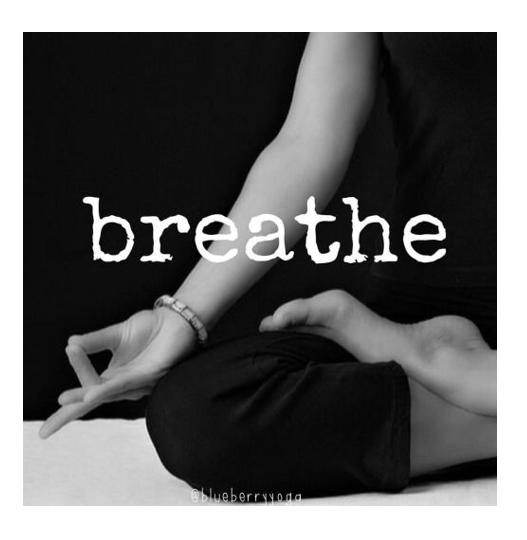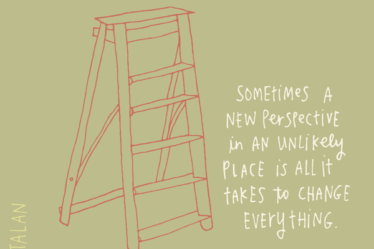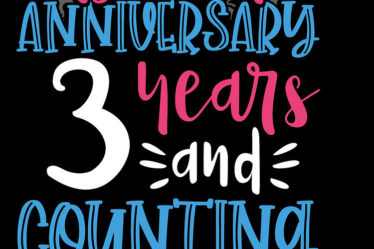
In case you couldn’t tell by the name of my business (Power in Breath Yoga) I’m a little obsessed with the breath — which is why I am SO excited about today’s topic. Pranayama is the 4th of the eight limbs and includes all of the breath control practices of yoga. If you want to get nitpicky, the word in Sanskrit can be broken down into two parts. Prana, meaning “life force” or “energy,” and Ayama which means to extend, draw out, restrain, or control. So, Pranayama is the use of the breath to direct/extend/control our vital energy.
We could get SUPER deep into philosophy here, but I’d like to keep this a bit lighter and note how we can use the ideas of Western medicine to understand what GENIUSES that the ancient Eastern practitioners of yoga actually were. As a Westerner myself, I know that we all love data and proof and research and want to understand HOW and WHY something works, so let’s head down that path for now.
I don’t feel especially qualified to explain all of the science behind breathing, but as it relates to yoga I CAN give a few practical examples. At the beginning of a class a teacher may direct you to slow your breathing. Lengthen the inhales, perhaps find a specific inhale to exhale ratio. This helps to calm the mind, the body, and the nervous system by acting on the vagus nerve (More on the Vagus Nerve). At other points in the class a teacher may ask you to change your breathing pattern. I personally favor the Ujjayi breath as we move into the active portions of the class. It asks the practitioner to breath in and out audibly through the nose. This type of breath builds heat in the body and can also provide a rhythm and point of focus for the practitioner especially in more challenging postures.
And speaking of challenging postures, have you ever noticed what happens to YOUR breath when you go into, let’s say, a deep backbend? Does your breath become more shallow, does your pace speed up, does it even feel like you are having a hard time breathing? That’s the fight or flight response kicking in, because let’s face it, backbends are scary! If you can actively take control of the situation, control your breathing (slow it down, lengthen the inhales) you can find that vagus nerve stimulation again and CALM yourself by using your breath. Perhaps you can stay in that posture a bit longer.
If you suffer from stress or anxiety (and let’s be real, who doesn’t?) proper breathing practices can be an amazing way to reduce both. As I mentioned in a previous post, I have anxiety. And, one of the first symptoms in my body is a bloated stomach. The science behind this is clear if you have read anything about the gut-brain connection and it again takes us back to the vagus nerve (Gut Brain Connection). Finding the right breathing technique to stimulate and tone the vagus nerve can be a fantastic way to decrease stress and anxiety AND the physical symptoms they may cause in your body.
Your breath is not only a tool, it’s a guide! You can use the breath to help calm yourself as we noted in backbends, you can also use it to determine if you are pushing too hard. If you are unable to slow your breath, if you are panting, or grunting, then it’s a sign that you need to back off in a pose or in your pacing. Thinking back to that Ujjayi breath–if you cannot continue breathing in and out through your nose, if you’ve begun mouth breathing and gasping for air, you are doing too much.
In fact, this is one of the hardest parts of teaching for me given our current situation. Due to the pandemic (and the cold winter months) all of my classes are on zoom and EVERYONE is muted except for me. I can’t hear people’s breath. That is normally a HUGE indication for me as to how I should pace my class. It let’s me know when to back off, slow down, offer a child’s pose, or kick it up a notch. Everything is about the breath. Power in breath 😉
If any of this has piqued your interest, I have a few recommendations: If you want to geek out on this with me I HIGHLY recommend the book One Simple Thing: A New Look at the Science of Yoga and How it Can Transform Your Life by Eddie Stern. He is also AMAZING to listen to on podcasts (Ashtanga Dispatch Podcast Episodes 31 and 40, Broken Brain Podcast Episode 159) and has a way of explaining VERY complex yoga philosophy in ways that Western practitioners can appreciate and understand.: using science to back up the philosophy and help explain the “how” and “why” yoga is so powerful. He is also the creator of The Breathing App, a simple and straightforward way to begin a pranayma pracice (and it’s FREE!). Also, bo be clear, I do not make any money off of all of these recommendations, these are just tools I have found to be very useful in my practice and expanding my own knowledge.
*Caveat / Disclaimer: Please keep in mind I am sharing with you my current understanding of these very complex ideas. I am a middle-aged white woman from the midwest and have only spent the last 6 or 7 years studying this ancient tradition. I implore you to consider these factors, and absolutely seek out other resources to dive deeper for yourself. I also invite you to share YOUR knowledge, in a kind and thoughtful manner, and offer different interpretations of the ideas I have presented as a way for us to all learn and grow.*


